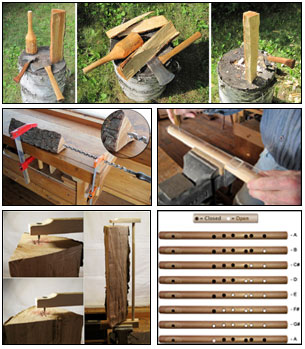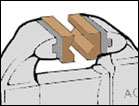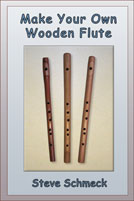|
|
The book covers:
– Tools
– The process
– Stock selection
– Boring and roughing the blank
– Turning the tube
– Marking and drilling the finger holes
– Tuning and finishing the flute
– Playing your first tune
– Fingering chart
– Tunes to get you started
Each step is illustrated and the text is geared toward folks
who have no prior experience making musical instruments.
Additional information on how you might make multiple flutes
is also provided. In the examples described in this guide I
turn a piece of firewood into a nice looking and sounding
wooden flute. You can do it too!
|

|
Notes & Updates:
I have had some feedback from folks using this book to guide them in
making their first wooden flute. Below are a few notes related to
the flute making process:
- Lathe required? While a wood turning lathe will simplify
the flute making process it is possible to shape the outside of the
flute tube with hand tools. I'd recommend using a flat-soled
spokeshave. The trick is to hold the tube securely without crushing
it in your vise. A pair of shop-made v-shaped vice jaws would be a
good idea.

- Wood moisture: Boring into the end grain of a piece of wood
is often difficult. The ideal wood is a close-grained hardwood like
cherry. End boring is easier if the wood is green as opposed to air
or especially kiln dried. Wood from a recently felled tree is
easiest to bore. I often use a piece of firewood that has not had a
chance to dry much. Next best is wood that has been air dried.
- Wood sources: My best recommendation is to be alert for
green wood opportunities like a tree falling in your yard or
neighborhood. Arborists and tree services might have just what you
are looking for
|


